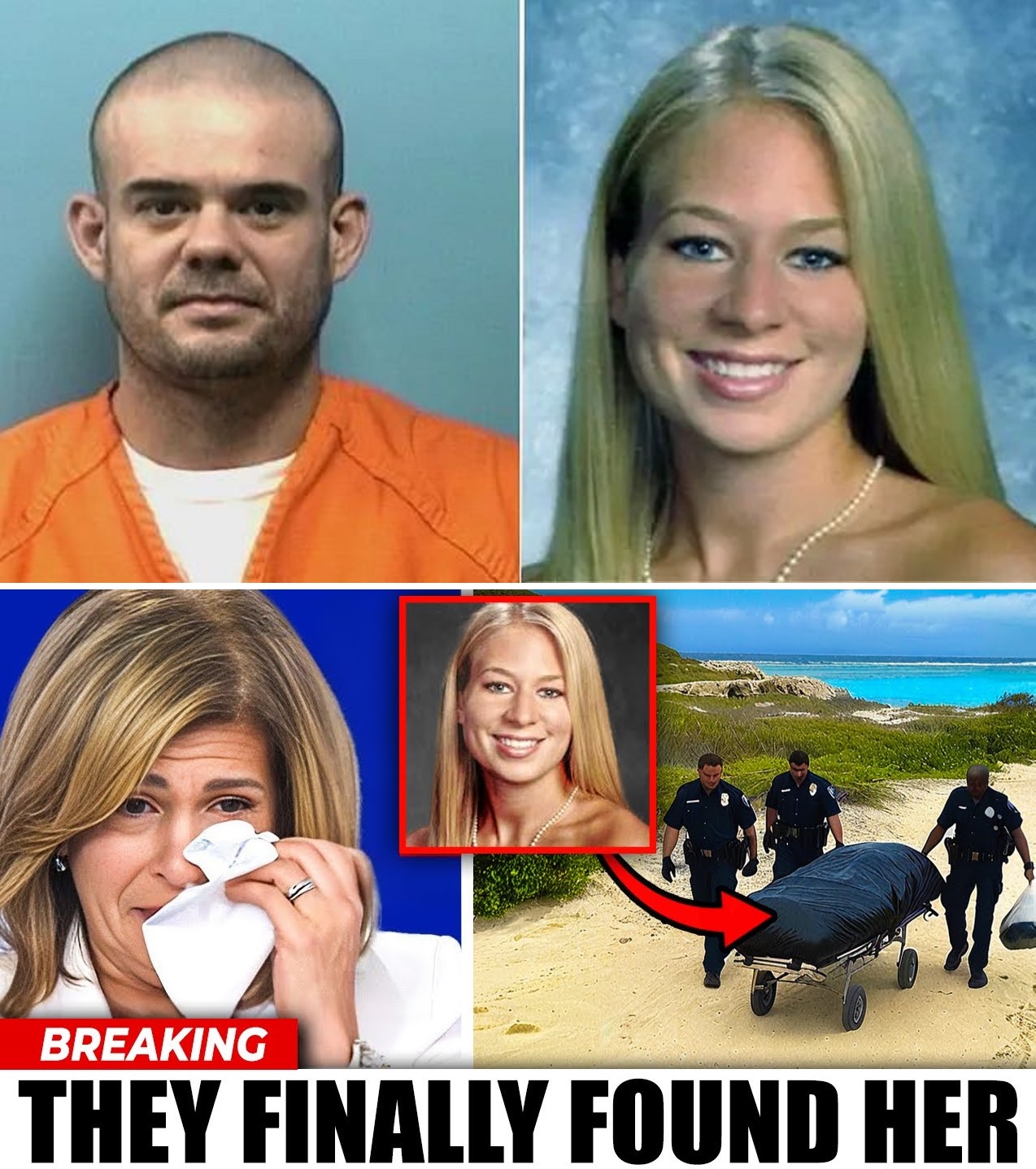20 Years Later, The Natalee Holloway Mystery Was Finally Solved… And It’s Worse Than We Thought 😱
Natalee Holloway’s dream trip to Aruba ended in a nightmare that gripped the world. Two decades on, a killer’s chilling confession reveals a brutal attack on a moonlit beach, a body lost to the sea, and a heartless scheme to profit from a family’s pain. This isn’t just closure—it’s a truth that exposes evil’s cruel disguise.
What really happened to Natalee? Dive into the haunting details:

Twenty years after Natalee Holloway vanished during a high school graduation trip to Aruba, the mystery that captivated the world has been laid bare in a confession that delivers more pain than closure. In October 2023, Joran van der Sloot, the Dutch national long suspected in her 2005 disappearance, admitted in a Birmingham federal courtroom to a crime of chilling brutality: crushing Natalee’s skull with a cinder block on an Aruban beach, dragging her body into the ocean, and walking away without a backward glance. The revelation, part of a plea deal tied to an extortion scheme targeting Natalee’s mother, Beth Holloway, confirmed what many feared but hoped against—a violent end to an 18-year-old’s life, concealed by an island’s silence and a suspect’s lies. As the 20th anniversary of Natalee’s disappearance approaches in May 2025, the truth, while resolving the case, exposes a darkness that lingers, leaving questions of justice and complicity unresolved.
Natalee Ann Holloway was the quintessential American teenager, born October 21, 1986, in Memphis, Tennessee, to Dave and Beth Holloway. Raised in Mountain Brook, Alabama, a Birmingham suburb known for its affluence and tight-knit community, she excelled at Mountain Brook High School, where she was an honors student and member of the dance team. With plans to study medicine at the University of Alabama, Natalee was the eldest of two, a protective sister to her younger brother, Matt, and known for her infectious laugh and kindness. “She was our light,” Beth wrote in her 2007 memoir, Loving Natalee: A Mother’s Testament of Hope and Faith. Her graduation trip to Aruba, a Dutch Caribbean island famed for its white sands and azure waters, was meant to be a joyous milestone.
On May 26, 2005, Natalee joined 124 classmates and seven chaperones for a five-day trip, staying at the Holiday Inn in Oranjestad. She threw herself into the island’s offerings—snorkeling by day, dancing at night in clubs like Senor Frog’s and Carlos’n Charlie’s, where the music pulsed and drinks flowed freely. On May 29, she called Beth, describing Aruba as “paradise.” It was their final conversation. The next night, May 30, marked the group’s last evening. Natalee, in a white tank top and denim skirt, headed to Carlos’n Charlie’s, a popular nightclub. There, she met Joran van der Sloot, a 17-year-old Dutch local whose charm masked a troubling reputation. The son of a prominent Aruban judge, Paulus van der Sloot, he was a regular in the island’s nightlife, known for gambling and smooth-talking tourists.
Around 11 p.m., witnesses saw Natalee leave the club with van der Sloot and two Surinamese brothers, Deepak and Satish Kalpoe, in a silver Honda Civic. They drove to the Fisherman’s Huts, a remote beach near the Marriott Hotel, known as a spot for late-night encounters. A security guard reported seeing Natalee with van der Sloot around midnight; she appeared tipsy but content, while the Kalpoes stayed in the car. That was the last confirmed sighting of her. When Natalee missed the 4 a.m. check-in at the hotel, her roommates alerted the chaperones. Beth, already en route for a planned Mother’s Day surprise visit, landed in Aruba by noon on May 31, gripped by fear.
The search began immediately. Aruban police swept the island, but the Holloways drove the effort. Dave arrived, pressing for FBI involvement, while Beth posted Natalee’s yearbook photo—blonde hair, radiant smile—across Oranjestad. The case became a media juggernaut: CNN broadcast vigils from Mountain Brook, where yellow ribbons adorned trees; The New York Times ran front-page stories; and Beth appeared on Oprah and Good Morning America, pleading, “Where is my daughter?” Early theories pointed to drowning, with Aruban officials citing the island’s strong currents, but the Holloways suspected foul play.
On June 3, a tip led police to the Kalpoe brothers’ home; their car matched witness descriptions. Van der Sloot was arrested at a beachside café, spinning a story: he’d dropped Natalee at the Holiday Inn around 2 a.m. after she felt ill, and she’d kissed him goodbye. The Kalpoes corroborated this, but hotel logs showed no such drop-off. Inconsistencies mounted, and on June 9, all three were rearrested on suspicion of kidnapping and murder. Van der Sloot’s story shifted—he admitted lying about the drop-off, claiming he’d left Natalee on the beach. Evidence was scarce: a hair found on a museum rafter, where he claimed they’d gone for a “view,” tested inconclusive. By September 3, 2005, all three were released for lack of a body or concrete proof. “No corpus delicti, no case,” Aruban officials said, prompting Beth to accuse them of shielding locals.
The case’s fallout was profound. Aruba’s tourism took a $30 million hit in 2005, with bookings down 10%. The Holloways’ marriage collapsed; they divorced in 2006. Beth founded the Natalee Holloway Resource Center in 2010, distributing safety kits to students, and pushed for the 2016 International Megan’s Law to alert travelers about sex offenders. Dave remarried, co-authored Aruba: The Tragic Untold Story of Natalee Holloway and the Missing Evidence in 2006, and alleged a cover-up by Aruban elites. Natalee was declared legally dead in 2012, but the case remained a gaping wound.
Van der Sloot, meanwhile, continued his descent. In 2010, exactly five years after Natalee’s disappearance, he murdered Stephany Flores Ramírez, a 21-year-old Peruvian student, in his Lima hotel room, beating and robbing her. Captured after fleeing to Chile, he was convicted in 2012 and sentenced to 28 years in Peru’s brutal Chalapalca prison. Even incarcerated, he preyed on the Holloways. In 2010, he’d demanded $250,000 from Beth for information on Natalee’s remains, taking $15,000 via her lawyer, John Q. Kelly, before giving false leads about a body buried in his father’s home foundation. The FBI charged him with extortion and wire fraud.
In 2023, extradited to Birmingham, van der Sloot faced U.S. charges. On October 18, in the Hugo L. Black U.S. Courthouse, he confessed as part of a plea deal: 20 years concurrent with his Peruvian sentence. Before Judge Anna Manasco, he described rejecting Natalee’s advances on the beach, then, enraged by her insistence, grabbing a cinder block and smashing her head. He dragged her into the surf, ensuring no trace remained, and returned home to sleep. “I’m satisfied he did it,” Beth said outside the courthouse, her voice steady but heavy. “I know where she is.” Yet doubts persist—did the Kalpoes, released without charges, know more? Was Paulus van der Sloot’s influence a factor in the early investigation’s stumbles?
The confession, while historic, offers little solace. Van der Sloot, now 38, may walk free by 2040, factoring in Peru’s parole rules. Aruba, still smarting from the case’s economic toll, has tightened security but remains a magnet for American tourists. Beth continues her advocacy, speaking at colleges about travel safety. In Mountain Brook, Natalee’s memory endures in scholarships and annual vigils. The truth, though solved, is indeed worse than imagined—a young life snuffed out in a moment of rage, a family left to piece together meaning from grief. As Beth told reporters, “We have our answers, but not our daughter.”





